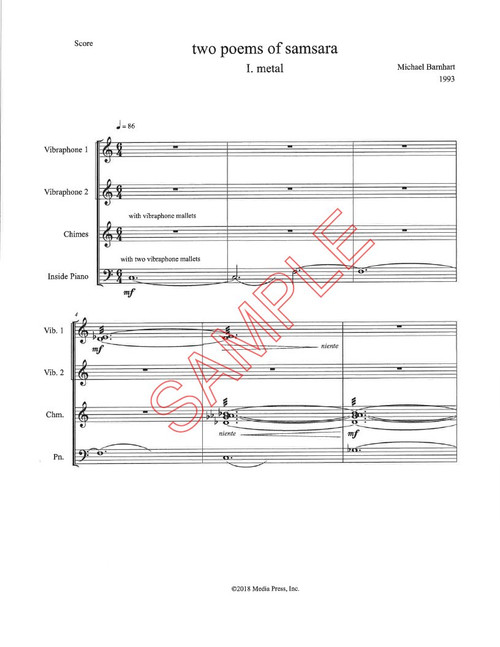Includes score. Epitaphs is a ritualistic farewell featuring three provocative quotes about mortality. First heard is the English translation and melody from Epitaph of Seikilos, one of the oldest known human songs. Second is the epitaph of British statesman Winston Churchill bringing with it similar rhythms that appear both in Japanese drumming and American swing, presented in austere reduction. The deathbed poem of Barnhart’s first meditation teacher, William Dometrich completes the piece. A wooden-tongued marimbula featured throughout was designed and built at Rome Hill Studio by Bradley Gray.
Print size: Letter (8.5 x 11")
Review from Percussive Notes (Dec. 2020):
Epitaphs
Michael Barnhart
“Epitaphs” is described by the publisher as “a ritualistic farewell featuring three provocative quotes about morality.” Some of the movements contain spoken word of these quotes while the two others act as instrumental interludes to separate the movements. Each movement has a unique character, which provides a nice sense of diversity to the overall work.
The technical demands of this piece are relatively low. Where the actual demand lies is in the musical and theatrical performance of the work as well as the procuring of the instruments. While the small kalimba should not be a problem, the wooden marimbula could be more difficult to obtain. The score provides contact information to a custom woodworker who made the instrument for the premiere.
The work explores a variety of interesting textures, and the melodic movements that utilize the kalimba and marimbula are complemented well by the percussive interludes. The spoken-word moments are not rhythmically attached to the percussion parts, making the coordination between those two elements easier. Performers will find the challenge in executing these moments of text with the proper character and connection to the music.
Michael Barnhart provides us with an interesting work that is technically approachable but musically challenging on multiple levels. This piece would work well for college students looking for a work that adds theatrical elements to a program if they can procure the necessary instruments.
—Brian Nozny
Demo:







